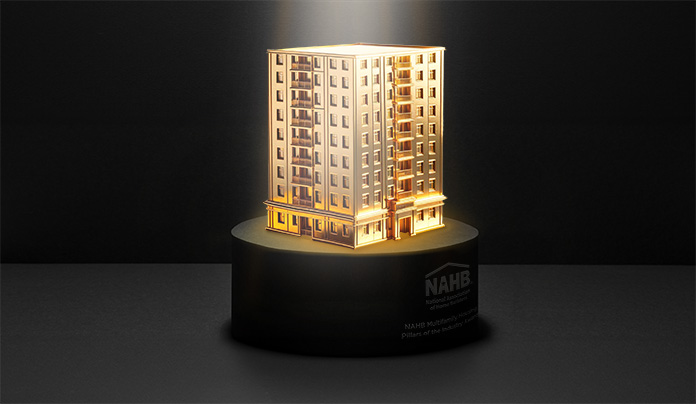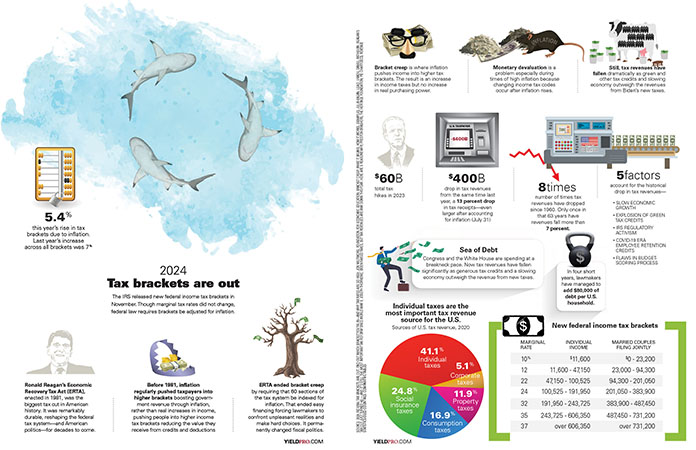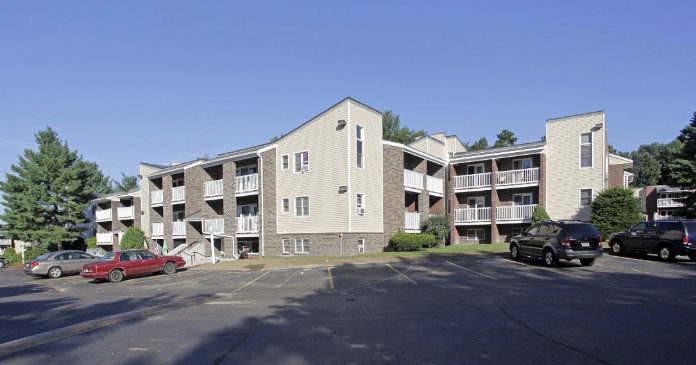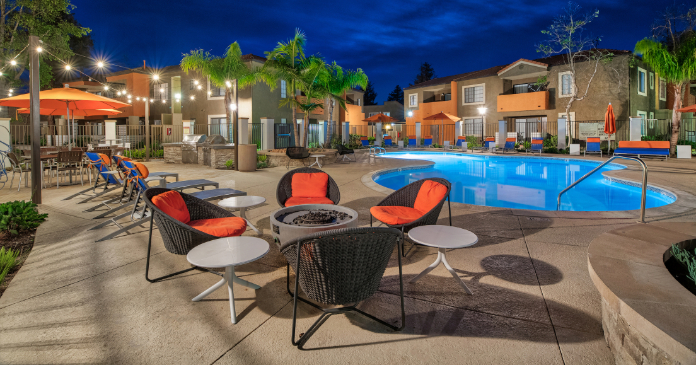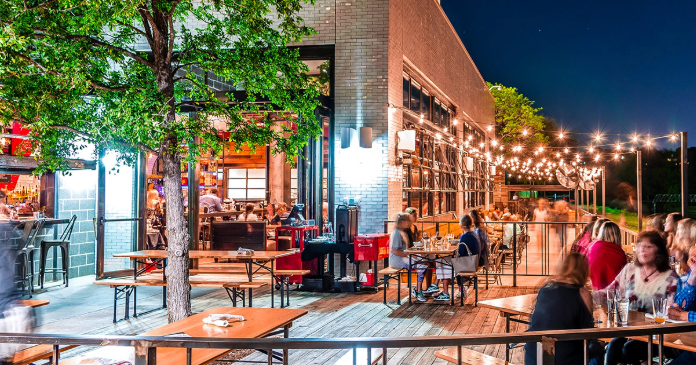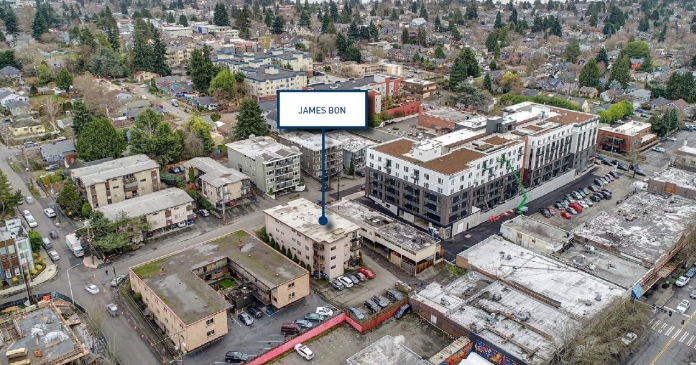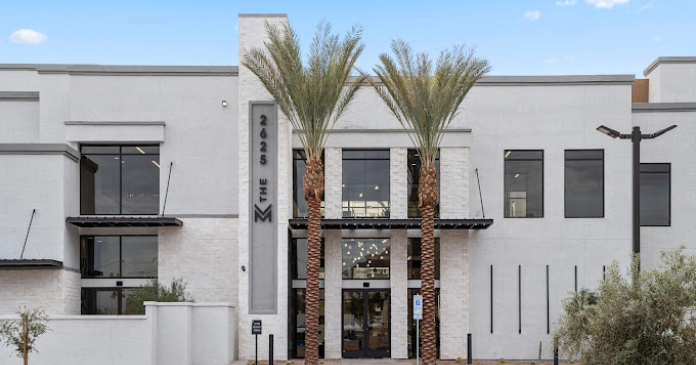Influenced by the California missions, courtyard housing is characterized by buildings of varying masses built around asymmetrical courtyards typically filled with fountains and lush foliage.
The style is staging a comeback in Southern California, thanks to a visionary general contractor, an innovative architectural firm and a developer with a personal history in the film industry, all of whose projects borrow from the past yet are surprisingly contemporary.
One, a five-year-old, 20-unit urban courtyard-style apartment community called 7 Fountains, is being offered for sale by the original owner/developer. Expected to command a sale price of more than $1 million per unit, 7 Fountains is nestled in a historic West Hollywood enclave in the heart of Tinseltown, less than a block from the world-famous Sunset Strip. It is in close proximity to the Chateau Marmont–a star-magnet hotel frequented over the years by John Belushi, Marilyn Monroe and Mick Jagger–in an area that boasts one of Los Angeles’ highest median incomes.
Named for the custom-designed fountains punctuating four common courtyards filled with bougainvillea, agave, eucalyptus trees and African palms, 7 Fountains offers its mostly professional metropolitan residents a sense of both privacy and community. The courtyards are inviting spaces that create a place of peace in perfect contrast to the freeways, the high-rises and the hustle and bustle of the 21st Century world, said Boyd Willat, an art director, movie set designer, inventor and developer of two urban courtyard communities as principal of Angel’s Landing LLC, the company he named for the bronze statues that grace the entries of both of his multifamily projects.
Built in 2002 for around $15 million (including land value), 7 Fountains represents Willat’s dream architectural project based on a concept he calls “theatre architecture.” He drew from his background in the motion picture arts and borrowed from the great architects of Spain and Los Angeles in its creation. “Traditionally, architecture is form follows function. My approach was to take architecture and make it form follows feeling,” said Willat.
Learning curve
7 Fountains received four awards–a Charter Award from the Congress for New Urbanism in 2002 and awards from Builder’s Choice, Westside Urban Forum and National Association of Home Builders’ Pillars of the Industry contest in 2004. But the prize-winning project was not Willat’s first. He cut his development teeth on a 14-unit property called Isola Bella, located in the historic Harper courtyard district about a block from the site on which he would later build 7 Fountains. The inspiration for Isola Bella came during his many trips to Italy, where exists within a small bay off Taormina, Sicily, the tiny island of Isola Bella, also known as the Pearl of the Ionian Sea.
Equity funding for Isola Bella came in part from Willat’s previous manufacturing businesses. He completed the property in 1993 with the intent of selling the units as condos, but the real estate downturn of the early 1990s made that plan impractical. Instead, he continued to operate Isola Bella as an income asset until 2001, when he sold the building to Accord Interests LLC, a commercial and residential developer that has built 25,000 apartments in Texas, Florida and Missouri. The sale was engineered by Andrew Levant, senior vice president of George Smith Partners, Inc, in an off-market deal.
Accord Principals Joe Mansour and Karl Sternbaum spent about $500,000 on exterior maintenance and resold Isola Bella the following year to a private investor who continues to rent the two-bedroom, two-and-a- half bath units that boast loft space and private rooftop decks for rates ranging from $3,650 to $4,650.
“Isola Bella was done as a practice building and I made my mistakes on it, not terrible mistakes, but I learned a lot about space and proportion. Then I took a trip to Spain and studied the architecture of Granada, which is the classical reference architecture of courtyards. Granada is filled with fountains, fountains that follow pathways, fountains that roll down banisters and wonderful fountains that come out of walls,” said Willat.
Returning from Spain, Willat assembled a team that shared his passion for the 1920s courtyard housing style and began development of 7 Fountains. That team includes general contractor Lefevre Corp, headed by Tim Lefevre, and architects Elizabeth Moule and Stefanos Polyzoides, principals of Moule & Polyzoides Architects and Urbanists. Moule and Polyzoides have designed nearly a dozen such courtyard projects in Southern California and Polyzoides co-authored Courtyard Housing in Los Angeles with Roger Sherwood and James Tice.
The team built 7 Fountains on less than an acre of land that had been in Willat’s family for almost a century, using proceeds from the sale of Isola Bella and additional financing arranged by Levant.
Construction financing of $6.5 million was provided by Corus Bank and UBS Warburg made a $6.8 million permanent loan.
“I built my dream project on the home site where my children were born and my father started his business and I started mine,” said Willat, referring to the DayRunner personal organizer and the Sensa Pen, both of which he invented in the garage of his family home.
His father, Irvin Willat, a renowned silent movie actor, filmmaker and head of Willat Studios in Culver City, purchased the property in 1919 for his bride, silent film star Billie Dove. In 1920, the elder Willat renovated the home and built a professional photo developing lab on the rear lot. When he died in 1976, Boyd returned home to pursue a seven-year career as a motion picture set designer, working on films that include Ordinary People and Escape from Alcatraz, before launching his manufacturing businesses.
Both the Willat family and the house that once stood at 1414 Harper are steeped in Hollywood lore. In its heyday, guests of the home included Marlene Dietrich, Harry Houdini and Howard Hughes, the latter of whom is said to have first learned about film making from Irvin Willat.
Courtyard contrarian
Boyd Willat could be considered a contrarian developer. He built 7 Fountains at half the site’s allowed density, using materials and finishes that most developers would have shied away from because their use added about 25 percent to development costs. Those materials include Terracotta walls, copper rain gutters and downspouts, wrought-iron balconies with automatic watering systems, hand-painted Malibu tiles and hardwood and Terracotta tile flooring.
Finishes include Villeroy and Boch farmhouse sinks, Groehe faucets with pullout hand sprayers and wine storage areas with coolers.
Bathrooms include pedestal sinks, two-person bathtubs and separate showers.
The units at 7 Fountains average 1,600 sq. ft., each with an entirely unique floor plan and two separate entrances–one to the residence and another to the office/media room that is outfitted with the latest in technological infrastructure, including fiber optic, cable, HDTV and satellite hookups, as well as T1 lines and cat5 telephone lines.
Private balconies afford city or courtyard views and are reinforced to support private spas.
It is just that attention to detail and quality that delights the senses at every turn and helped convince lenders back in 2000 that the property could generate sufficient rent from just 20 residences to pay the annual debt service. As it turned out, 7 Fountains has commanded premium rents since opening and often has a waiting list for the next available unit. Gross income today is in excess of $1 million, yet Levant believes there is significant opportunity to increase rents going forward, depending on the marketing plan.
Of the architects, it also could be said they have taken the road less traveled with 7 Fountains by designing the open spaces first and arranging the housing around them to create an asymmetrical progression of interconnecting, but distinctive, courtyards. One courtyard features a large fountain at its center, a wood-burning community fireplace and hand-crafted patio furniture. Another is offset by a fountain surrounded by Senegalese palms, including one of the oldest and largest such trees in Los Angeles. “It’s not your usual architecture. 7 Fountains was built to provide a theatrical experience and it allowed me to make something real out of what the movie studios make in terms of mirage,” said Willat.
But building the property today might not be economically feasible, said Levant, who is handling the listing. To redo 7 Fountains to its current specifications, he estimates costs would run between $8 million and $10 million for the land and $300 to $350 per sq. ft. for the 43,000 sq. ft. of improvements. “Add the design and city fees, the condo map, legal and capital costs and build in a developer’s profit and you could easily get to $30 million replacement cost today for 7 Fountains,” he said.
Levant is marketing 7 Fountains to a multitude of investors for a variety of innovative uses. “7 Fountains could potentially serve as a hotel annex for any of the beautiful hotels along the Sunset Strip like the Sunset Marquis, the Standard, the Mondrian, the Bel Age, the Chateau Marmont and the Beverly Hills Hotel further up the Strip,” he said. Because it is being offered with a fully approved condo map, Willat envisions the property attracting a condo converter, or figures it could operate as an exclusive, high-end “Oakwood-type” corporate housing, or ultra-luxury “full service” apartments. “It also lends itself to one buyer turning it into a live/work enclave, a corporate retreat, or perhaps even a private family compound,” Willat said.
“I financed 7 Fountains for Boyd back in 2000 and it was completed in 2002. From the beginning, his goal was to give it a little seasoning, achieve some level of fame, put a condo map on the property and then sell it in bulk, and that’s exactly what’s happening,” said Levant, adding that he has financing products available for the next buyer.
“Boyd went contrary to conventional wisdom with 7 Fountains. He used all high-end and custom materials and cut way back on the density.
This property is truly irreplaceable and we expect it to sell for a premium,” he added.
Court and spark
7 Fountains set the standard for several other urban courtyard projects in the Los Angeles area, including Vista del Arroyo in Pasadena, which involves construction of three new multifamily buildings, totaling 30 for-sale units, built around and in character with the restoration and/or reconstruction of eight historic bungalows designed in the 1920s by local architects Sylvanus Marston, Garrett van Pelt & Edgar Maybury, and Myron Hunt & Harold Chambers.
The bungalows were built for the Vista del Arroyo Hotel and served as resort-style winter residences for wealthy families from the East Coast. The Federal government used them during WWII as a hospital until the war ended, after which they sat empty until the Lefevre Corp. and Moule and Polyzoides acquired them in 2001.
With the painstaking renovation process now complete, the bungalows and their surrounding homes are offered for sale at price points ranging from $1.3 to $2.3 million. “The design for the new- construction condos executes many of the features I used in 7 Fountains. There are several courtyards that are dispersed as opposed to courtyards that create a unison, or theatrical progression that comes to a conclusion, because this property didn’t lend itself to that,” said Willat, who invested his own money in the development deal and used the background of 7 Fountains to help move the project through the approval process.
“7 Fountains was so successful that it not only led to the development of Vista del Arroyo, but the same architect and general contractor also collaborated with an equity partner and acquired a site in Palos Verdes on which they are under construction on an 18- unit product that’s as close to being a clone to 7 Fountains as you can get,” said Levant. The $25 million development, with the working name Silver Spur Court, is part of the city’s Peninsula Village plan started by Polyzoides that looks to transform the area into a mixed- use European-style village.
Units at Silver Spur Court will range from 1,400 to 2,600 sq. ft. and feature private balconies and patios that overlook open courtyards replete with fountains, mature trees and a large outdoor fireplace.
The project is scheduled for completion in the summer of 2008.
Is there another real estate project in Willat’s future now that 7 Fountains is on the market and Vista del Arroyo complete? Today he’s not sure, but if another multifamily development is in the cards he says it will be in the vein of courtyard housing.
Meanwhile, whoever buys 7 Fountains could potentially end up with the entire portfolio of projects. Levant is marketing the second phase of Vista del Arroyo and Silver Spur Court in bulk and would welcome bundling 7 Fountains in the deal. “Someone could purchase a total of
51 spectacular condominium residences in three projects in three key Los Angeles locations and market them as a collection,” he said.



